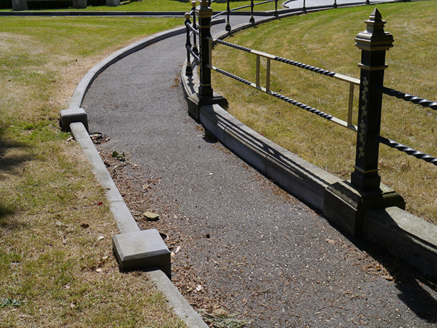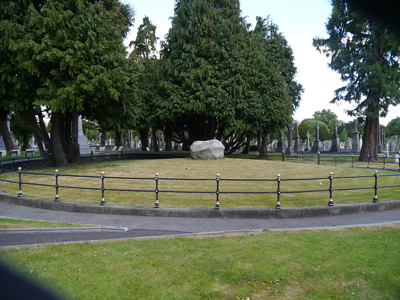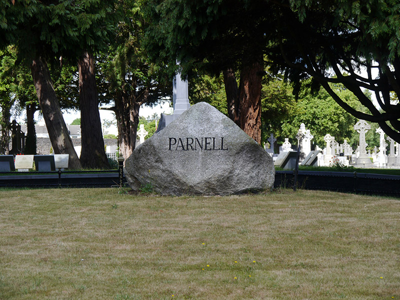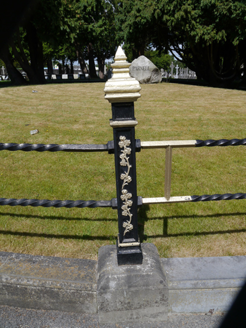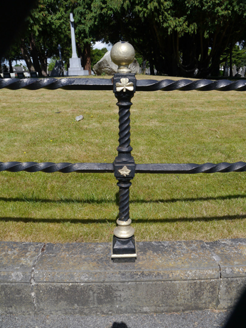Survey Data
Reg No
50130074
Rating
National
Categories of Special Interest
Architectural, Artistic, Historical, Social
Original Use
Grave monument
In Use As
Grave monument
Date
1890 - 1940
Coordinates
314619, 236983
Date Recorded
21/06/2018
Date Updated
--/--/--
Description
Circular-plan grave enclosure of 1891, comprising grassed mound with unhewn Wicklow granite stone (placed 1940) inscribed 'Parnell' located to centre. Encircled by decorative cast-iron railings on moulded limestone plinth; double twisted cast-iron rails between barley-twist piers having moulded bases, ball finials and medallions at intersections bearing shamrock and ivy motifs. At intervals are square-plan cast-iron piers with moulded finials and stringcourses and trailing shamrock and other ornament. Gate piers at cardinal points having moulded caps and trailing ivy motif, sealed with painted steel rails. Tarmac perimeter path. Located in Glasnevin Cemetery to west of cemetery mortuary chapel.
Appraisal
A simple circular enclosure and stone marking the grave of Charles Stewart Parnell (1846-1891). Born in Wicklow to a Protestant land-owning family, he was a powerful political leader in the 1880s, leader of the Irish Parliamentary Party, MP for Meath and President of the Land League founded by Michael Davitt. He is celebrated for his efforts to advance Home Rule and the rights of tenants to their land, having significant influence during the Land War of 1879-82. His political career was undermined by the catholic church and wider public disapproval of his private life, following his citation in a divorce case involving his lover Kitty O'Shea, whom he eventually married, just five months before his death in 1891 at the age of forty-five. His funeral, attended by 200,000 people, was the largest ever seen at Glasnevin, and mourners took sprigs of ivy from the cemetery walls to wear as buttonholes, forming the basis of Parnell's Remembrance Day as 'Ivy Day' and reflected in the ornament of the surrounding cast-iron railings. The fencing is of high-quality cast-ironwork over moulded limestone. The grave site is located in the former poor ground, on a mound erected over the site of a cholera grave of 1849, reflecting Parnell's wish to be buried with 'the common men and women of Ireland'. The stone was erected in 1940. The Parnell memorial makes a considerable contribution to the historical and cultural significance of Glasnevin Cemetery (originally Prospect Cemetery) which holds the graves and memorials of many notable citizens and can be counted among the most significant civic cemeteries in Europe.
